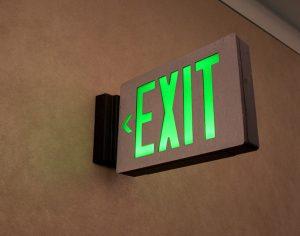While regarded a relatively mundane subject in a number of quarters, health and safety remains something that SMEs can ill afford to let drop to the lowermost end of their priorities. Indeed, for those of us who keep a close eye on the daily news churn, there have been a few snippets of coverage regarding the health and safety domain in recent weeks. The most notable of these revolved around the ‘strict liability’ placed on employers for workplace incidents resulting in loss or injury to an employee.
The implications of this liability were evaluated by Professor Ragnar E Löfstedt, director of King’s College’s Centre for Risk Management, in his extensive report to the government in November 2011, Reclaiming health and safety for all: an independent review of health and safety legislation. In it, he outlined the following state-of-play: “There are cases where employees have been awarded compensation despite employers doing everything that is reasonably practicable and foreseeable. This is because certain regulations impose a strict liability on employers that makes them legally responsible for the damage and loss caused by their acts and omissions regardless of their culpability.” Löfstedt thus put forward a recommendation that “regulatory provisions that impose strict liability should be reviewed by June 2013 and either qualified with ‘reasonably practicable’ where strict liability is not absolutely necessary or amended to prevent civil liability from attaching to a breach of those provisions”.
The intention here was ultimately to prevent diligent employers feeling the brunt of the UK’s escalating ‘compensation culture’ and going beyond what regulations require simply to avoid being sued. Nevertheless, as much as the government welcomed Löfstedt’s recommendations, its response to them has been shrouded in controversy, with the professor himself admitting it appears to go further than he envisaged. A tweak to the Enterprise and Regulatory Reform Bill has removed employers’ strict liability in some areas, meaning the onus is now placed on the employee to prove negligence on behalf of their superior when pursuing a civil claim. “The approach being taken is more far-reaching than I anticipated in my recommendation,” Löfstedt remarks in his follow-up report, published this February. “I hope that the government will carefully monitor the impact to ensure that there are no unforeseen consequences.”
Others who are uncomfortable with the change have naturally voiced concerns about such ‘consequences’, with some worried that the compensation culture among employees may transform into one of complacency on the employer front. However, for at least one legal mind, there is an insistence that the new position will not, and indeed should not, impact on the duty of care an employer still has to his or her employees when it comes to health and safety. “I don’t think in all honesty it is going to make that much difference to the potential liability of employers,” comments Denham Bell, consultant solicitor at London-based legal firm Keystone Law. “Yes, it reduces it, but employers have got to be aware that if an accident happens at work, and they haven’t taken all the necessary steps, they will still face a legal action from an injured employee. And there is still a potential for criminal liability on the part of an employer.”

To that end, the same basic rules continue to apply in the health and safety realm and it essentially stems, at the outset, from an application of practicality. “A lot of health and safety is common sense,” explains Sandra Moore, commercial director of environmental health consultants Perry Scott Nash. “The first thing is to carry out a risk assessment of any hazardous activities that are going on in the workplace.” She adds: “Employers do have to take a sensible approach and they have also got to take positive steps towards a safety culture. If there is a safety culture coming from the top-down, you get fewer accidents because everyone has a positive attitude towards health and safety.”
And although this may not seem the most revolutionary of observations, a little bit of education never goes amiss. In fact, it is a fairly key component for a business in its drive towards a reputable safety philosophy. “Employees also have a general duty under the Health & Safety at Work Act to ensure their health and safety, as well as that of their work colleagues,” Moore remarks. “So employers have got to provide sufficient levels of information, instruction and training and that can take a variety of methods. It doesn’t have to be sit-down-in-the-classroom-style; it could be a toolbox talk that lasts for 15 minutes to half an hour on a particular subject at a team meeting. But they have to instil confidence in their employees so that they can go to them with any health and safety or welfare issues – there has got to be that communication in place.”
Of course, the imperative to maintain a safe place of work also extends to the relationship an SME has with the general public, whether that be a customer, contractor or other third party. “It is quite explicit in the legislation – employers have a general duty, so they’ve got to make sure there are measures in place that will protect whoever is using the workplace,” says Moore. What is one to make then of the Health and Safety Executive’s (HSE) recently released list of ‘bogus’ health and safety excuses used by employers to justify certain decisions to customers? Bell laughs when recalling some of the incidents, labelling them ‘bizarre’, but stresses that they are thankfully few and far between. “In my experience, most employers are pretty responsive about health and safety,” he says. Yet, with changes afoot, the need to keep your eye on the ball has probably never been greater. ![]()
Share via:


















































